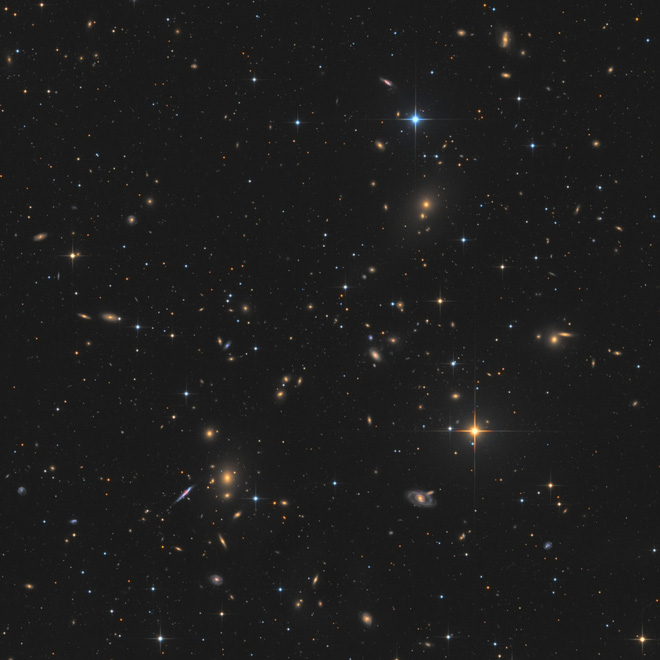Is there something hidden inside the giant cloud?
In the immense air, a cloud of hot, faint gas the size of the Milky Way was floating. Scientists believe that the gas cloud trapped in the middle of a giant cluster of galaxies is material mined from a galaxy. And more surprisingly, it did not disappear but remained so for hundreds of millions of years.
This is new information about the internal structure of galaxy clusters and offers a new way to study.
“It’s an interesting and equally surprising discovery. Its existence shows that astronomy, the older brother of the natural sciences, always contains new surprises, ”said physicist Ming Sun of the University of Alabama.
Galaxies bound by each other’s gravity will collapse into clusters. And the cluster appears a hot gas cloud called Abell 1367, also known as Climbing Amas, located 300 million light years from the vantage point. It is made up of at least 72 large galaxies, forming a supercluster with a huge and complex structure.
The region of space where galaxy clusters exist is full of interesting activities. For a long time, astronomers have tried to peer deep inside to see how the Universe is interconnected. In 2017, a research team using the Japanese Subaru Telescope discovered a small cloud of hot gas near the Abell 1367 region. As the origin of the gas cloud was unknown, they had to use more tools to pursue them. research.
Led by University of Alabama astronomer Chong Ge, the team added the XMM-Newton X-ray telescope and the European Space Agency’s (ESA) Multi-Unit Spectroscopic Exploration System (MUSE) ) to observe the hot cloud cluster. They detected a large amount of X-rays emitted, thereby measuring the size of the mass of material.
The clue shows that the cloud cluster is larger than the Milky Way, with a mass about 10 billion times that of the Sun. The first observations show that the cloud has no connection with the galaxies of the cluster, but drifts to this place from another unknown location.
The event is both interesting and strange: Scientists have found no galaxy near this location that could produce this gas. And if gas has been out of the galaxy for hundreds of millions of years, why doesn’t it mix with gas between galaxies? Initial calculations suggest that magnetic fields can hold gases together for so long.
Based on the large mass of the huge amount of matter, scientists believe that the cloud must have escaped from a large galaxy. If a gas path escaped the cloud cluster, the team could determine the path of the entire cluster and from there trace the parasitic galaxy.
Once data on this lonely cloud becomes available, astronomy will be able to find other clusters of similar gases. They can help us better understand the structure of a cluster of galaxies and determine the density of matter contained in each cluster. In addition, we have now confirmed that intergalactic space can suck the gas escaping from this galaxy.



